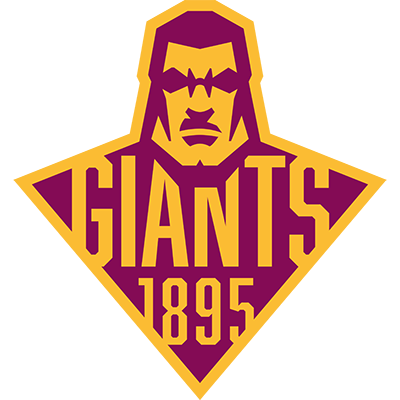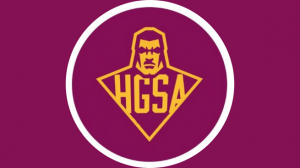18 Feb 2020
The Numbers Game: Don't count tries, count API
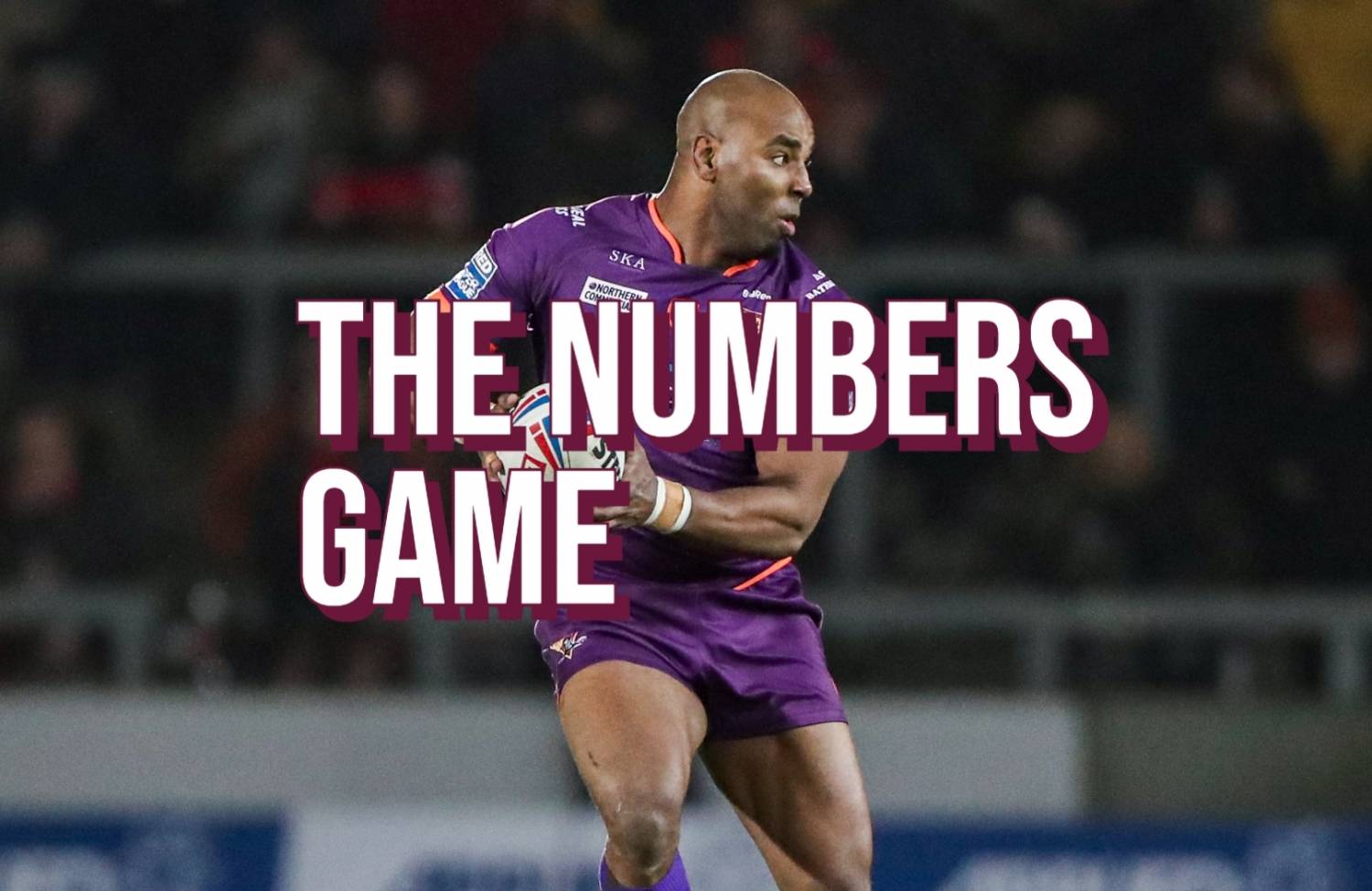
In this week's Numbers Game, we make a defence of the case that tries and assists are a bad way of measuring how influential a player is, so we came up with something else.
By Conor Murphy
Stats are a waste of time, so say some. In this case, here at The Numbers Game, we agree. Particularly two stats - tries and assists. The act of putting a ball over the try line is, of course, important, and you can't win without it. It ignores, however, a very basic premise of the game of Rugby League - that there are 13 people playing it.
So we decided to do something about it and create a new stat (yay!) that no-one asked for and no-one wants, but we think is an absolutely excellent way to determine the teamwork that goes into scoring points in the game of Rugby League. Welcome to an odyssey of statistical legend that ends with a fact we all secretly knew - that Michael Lawrence has been our second best attacking player this season. Here goes nothing.
The Problem
Every player wants to insist that they are the most important player on the team, or unit within the team. Rugby teams don't function like, for instance, Football teams. In a Football team, Lionel Messi can pick up the ball off a turnover and score with relative ease, relatively quickly. Lionel Messi can have claim to that entire big old goal.
This situation, while possible, is rarer in Rugby League. Jake Wardle's turnover try in 2019 against Hull KR and Leroy Cudjoe's Interception Try in the Playoffs against Warrington are rare moments of totally individual skill, but most scores come from a three, four or five tackle set - meaning multiple players have gained territory or position in order to set up the scoring opportunity for the try.
Therefore, we propose that the try and assist model for measuring player impact on a season is alien and outmoded. It is possible that a player is solely responsible for the whole four points achieved, but it is incredibly rare. We have used our first two games, game film and an Excel spreadsheet to devise a solution.
The Solution
In the most simple of tries, a player will return the ball from a turnover and score directly from the play - this means he is directly responsible for all of the points, no-one else was involved and the player can, legitimately take all of the credit.
🌬️
🔥 Jake Wardle raced 80m to score in last Friday's 30-22 win over @hullkrofficial
Can we make it 2⃣ from 2⃣ against their city rivals this week at @daciauk #MagicWeekend?
Tickets 🔗https://t.co/rFrboRoo6h#HuddersfieldBorn pic.twitter.com/Wl7HXcHrAM
— Huddersfield Giants (@Giantsrl) May 20, 2019
Yeah, that try is all Jake Wardle, that is.
Tries more often come as the end product of three, four and five plays that contribute to the final action of a set - a score. So, to credit all players involved, we looked at the plays preceding a try from the beginning of the set and divided the points by the number of players who had a positive involvement in the play.
This assumes that every positive involvement is equal and every subsequent play was created by the last one. This is Attacking Player Impact (API) - a name that we made up because it sounds authoritative and cool.
So, if the ball is turned over, and Player A runs through a gap, meets a defender and passes to Player B, both players receive a PI score of 2 - they both were responsible for half of the scoring play. If the ball is turned over and there is a five-play set with an one-out play each time, then the dummy runner and each of the players who did the run up would receive credit in the form. If we look at the play pattern, it makes calculating PI easier;
Hooker to Forward A
Hooker to Forward B
Hooker to Forward C
Hooker to Forward B
Hooker to Forward A
Hooker to Forward C to score.
Therefore, as there were 12 actions, each action will receive 0.333 API points (4/12 = 0.333). The Hooker will receive 2 points, while Forwards A, B & C will receive 0.666 points each. If there are 30 actions in a set, then each action would receive 0.133 API.
Now I know what you're thinking - there's a very obvious problem here, and when we found out that Adam O'Brien was responsible for more than 25% of our points on our first calculation of API, we realised it too.
The Adam O'Brien Problem
Now we all know Adam O'Brien is an excellent hooker, and an excellent creative and metronomic influence on the Giants attack. When we started to build the model to measure effectiveness, we came into a problem - according to our first model, Adam O'Brien is responsible for just under a quarter of our points in 2020, with a PI score of 9.33 out of 28.
The reason for this is simple, Adam O'Brien is the dummy-half for the vast majority of our plays, an can be involved in up to six times a set. So we sought to find a way to measure and differentiate between a positive impact on a play caused by a player at dummy-half, and a player at dummy-half not impacting on a play.
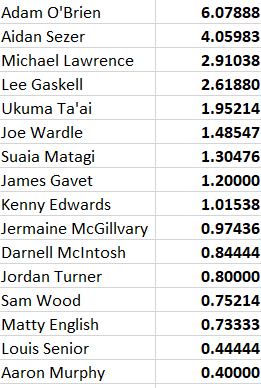
Model 2 of API, where one-out plays are counted as positive actions, while passes to a first receiver in good-ball plays aren't counted.
At first, we tried to only count a player as having made a positive impact when he ran a sole runner play (i.e Dummy Half to Player, direct to line), with this, we found one and out plays had a positive skew towards the hooker, something that we would have noticed less last year as we played with an interchange hooker. This meant that while his PI score came down to 6.07, it was still skewed.
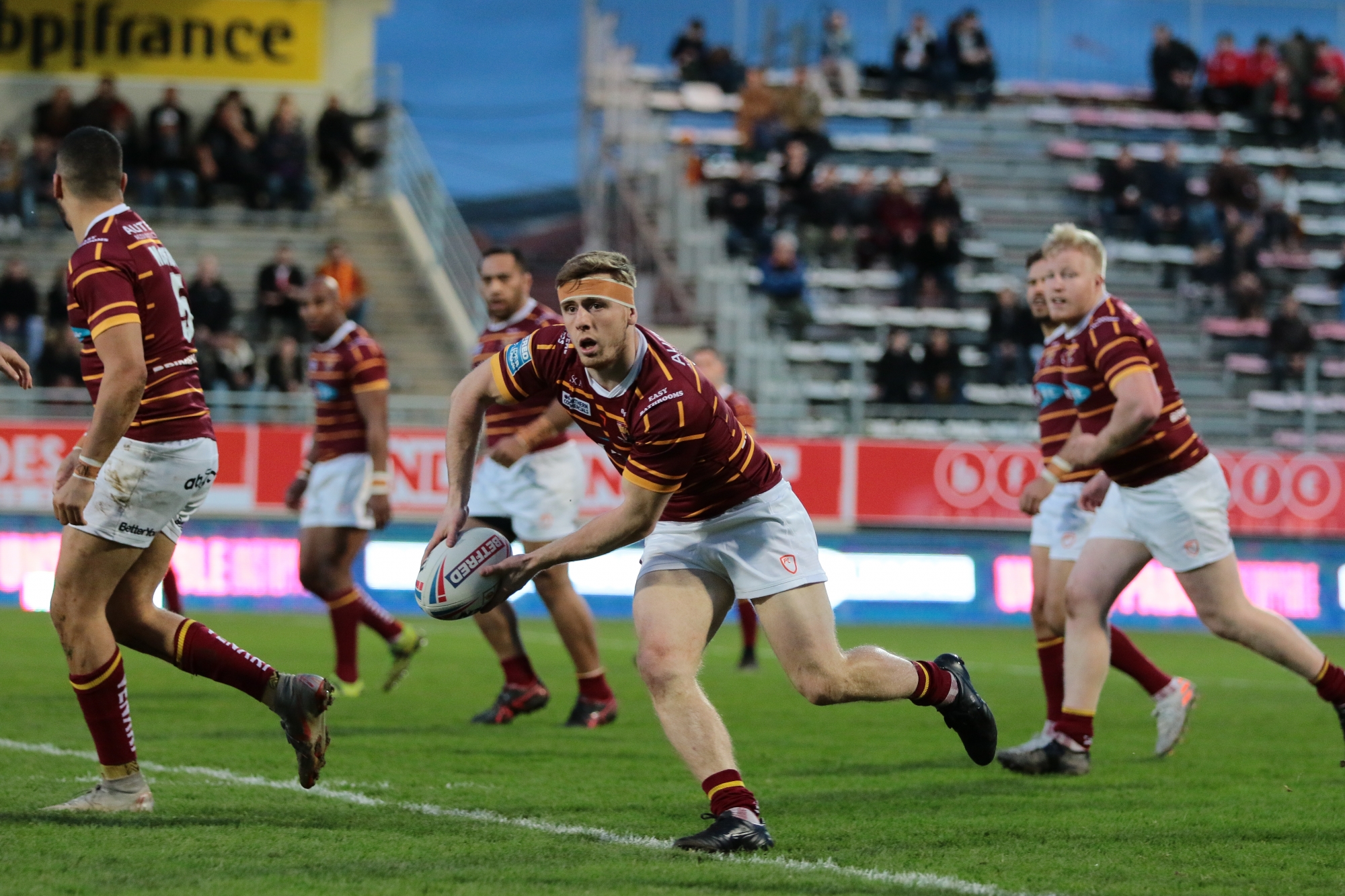
Adam O'Brien is good, but not responsible for a quarter of all our points.
Then we spoke to statistical genius Eorl Crabtree, and found a solution - if we discounted passes from the floor from dummy-half, it indicated a positive impact from dummy-half.
This discounted 18 of Adam O'Brien's involvements in scoring drives, and only counted his involvement when it was a positive play from Dummy-Half (a scoot, a drive direct from DH or a run and pass). This greatly decreased his Player Impact score, and made it a more realistic 2.4, meaning he has been directly responsible for about 1 in 12 points that the Giants have scored from tries in 2020. Sorry Adam, we just couldn't give you that much credit for all our points this year.
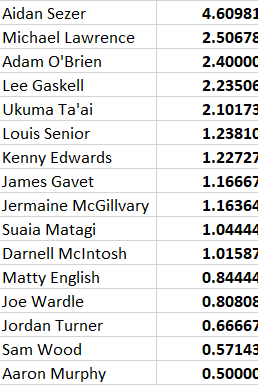
The Penalty & Goal Problem
So, in our first and second models, we ignored goals as individual acts by one player that would negatively skew player impact towards the goal kicker - since they were one-man plays, we considered it best to not count them and value them separately, through Goal Kicking Percentage (GKP). Then an important faction split amongst the office.
Some considered it pertinent to include Goal Kicking and Penalties as a whole, attributed to one player - lets call these people the Goal API Maximalists. Then there were the Percentage Rationalists, who brought their theory that a differing gradient of two points should be added to the total API score dependent on where the kick was taken - valid points and much discussion in the giantsrl.com office was had.
Our decision, however was that over the course of a season, a kicker will miss his personal percentage of kicks from different positions, so the best way to include goal kicks and penalties was to include them as part of the overall points shared. So in our third model, we counted a converted try as 6 points divided by the players involved in the set, with an extra action added for the goal kicker. This is because, we felt, that kicks from easier positions were created by the scorer, so if a kicker missed it, the actors involved still had an impact on that kick.
Take Louis Senior's try at Catalans in Round 1, before the total actions would be as follows;
Sam Wood run from tap
Michael Lawrence run
Ukuma Ta'ai run
Lee Gaskell pass to Aidan Sezer, pass to Darnell McIntosh, pass to Louis Senior
Now it included a final action; Aidan Sezer conversion. So while before Wood, Lawrence, Ta'ai, Gaskell, Sezer, McIntosh and Senior would share 0.571 API, calculated from 4 points divided 7 ways, they now share 6 points between 8, with Sezer contributing twice. We also did this for penalties, as a penalty was a score created by a team effort leading to field position that was attainable for the kicker to score. This has the benefit of the total API adding up to the total number of points scored, making it simpler to calculate a Total Percentage Attacking Player Impact (TP-API) - a stat we also just made up.
The Final Problem
Now the very foundation of API, discovered at the beginning of this article about 3 million years ago, was the prior set leading up to the try counting as having impacted on the score. This actually isn't entirely the case, however. We counted from the beginning of the previous set, but watching the game at Catalans, we discovered repeat sets leading to scores having a big influence on the game.
So we came up with a final parameter - we changed the classification of the set leading up to the score to the possession leading up to the score, so if a team had 40 plays leading up to the score without giving away possession, then all 40 have a claim to count as having impact. So, again to look at Louis Senior's try against Catalans. While at first we would look like this;
Sam Wood run from tap
Michael Lawrence run
Ukuma Ta'ai run
Lee Gaskell pass to Aidan Sezer, pass to Darnell McIntosh, pass to Louis Senior
Aidan Sezer conversion
We now included the plays up to and including the turnover - which added an extra involvement for Louis Senior, who returned the kick for a positive gain and Aaron Murphy, who won a penalty leading to the tap. So the full list would look like this;
Louis Senior return
Aaron Murphy run
Sam Wood run from tap
Michael Lawrence run
Ukuma Ta'ai run
Lee Gaskell pass to Aidan Sezer, pass to Darnell McIntosh, pass to Louis Senior
Aidan Sezer conversion
Ten actions, six points, means that Murphy, Wood, Lawrence, Ta'ai and Gaskell receive 0.6 API, while Louis Senior and Aidan Sezer receive 1.2 API. So finally, we're here - and the numbers are not at all surprising in some ways, while surprising in others. The API for each of our players in the first two games are as follows;
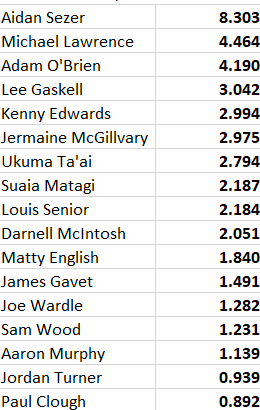
Adjusted Model 4 API, with Goals and Penalties counting towards the API number.
These numbers are very interesting. By looking at how the actors in scoring possessions accumulate actions over the first two games, we see that Michael Lawrence is the absolute King of API.
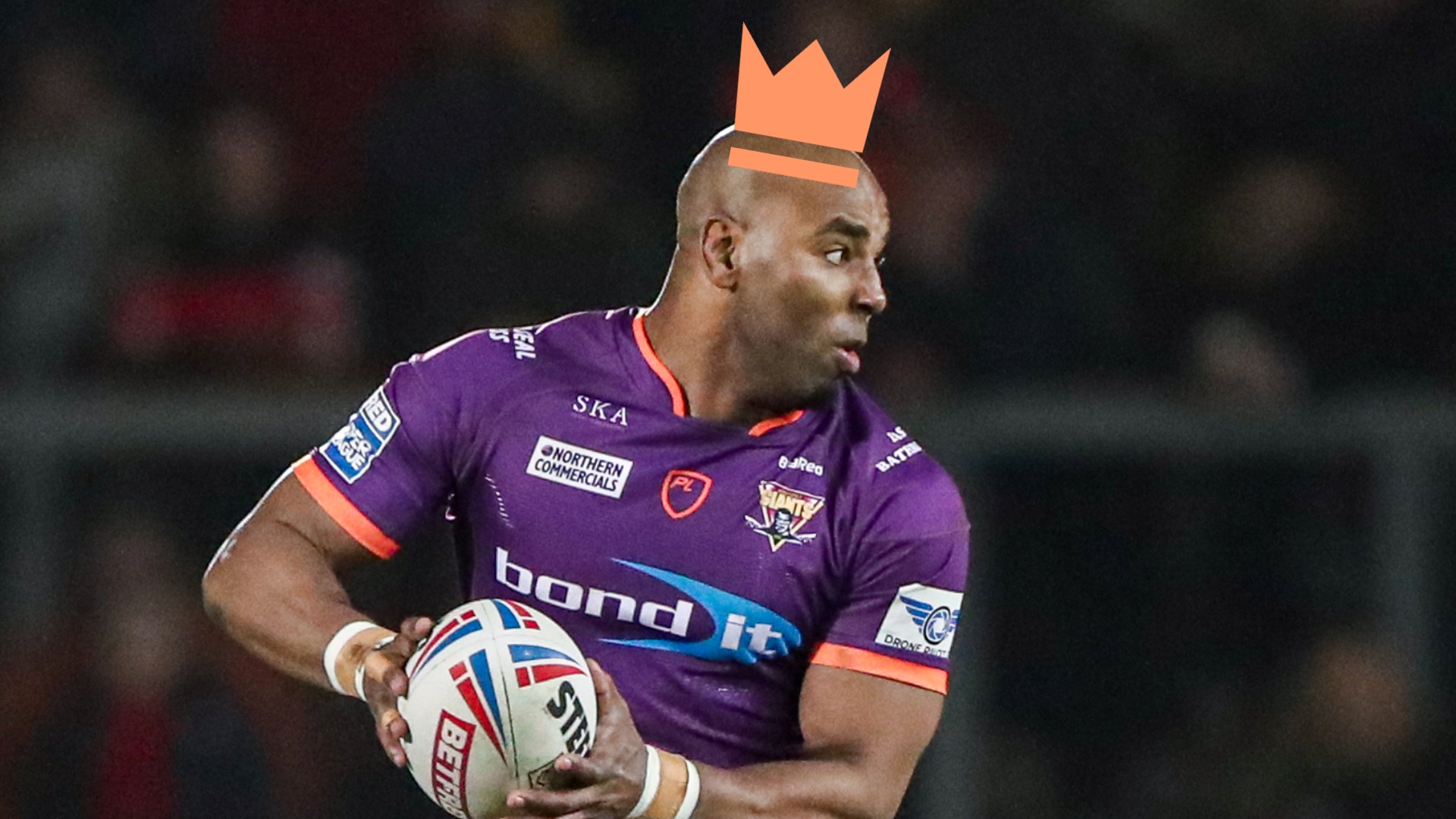
Michael Lawrence wearing his crown as King of API
His involvement in bringing the side up the field throughout the first two games is handsomely rewarded, yet his try stats - zero tries in 2 appearances - show him as having no effect. Similarly Kenny Edwards, who brings momentum in a possession regularly during our first two wins, shows him having an effect on nearly 3 points of our 42 scored, while he has similarly not scored in 2020.
Wingers' influence on an attack are limited by API, but forwards are enhanced as they see more of the ball and get a larger share of the credit for scores. Aidan Sezer, however, is involved nearly constantly throughout most attacking plays, and has seen the ball in every single one of our tries in 2020.
His kicking as well adds an extra number of actions, meaning he soars ahead. While we aren't saying that API is the answer to crediting players involved in a set, we are saying that tries and assists aren't the answer to showing a players impact on a team.
